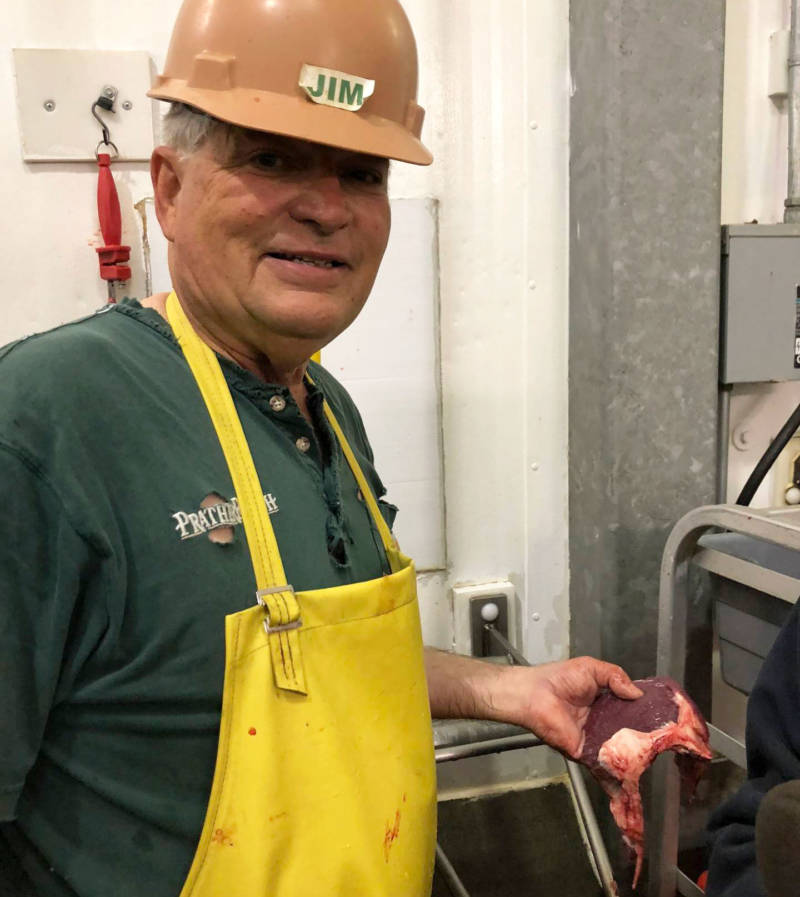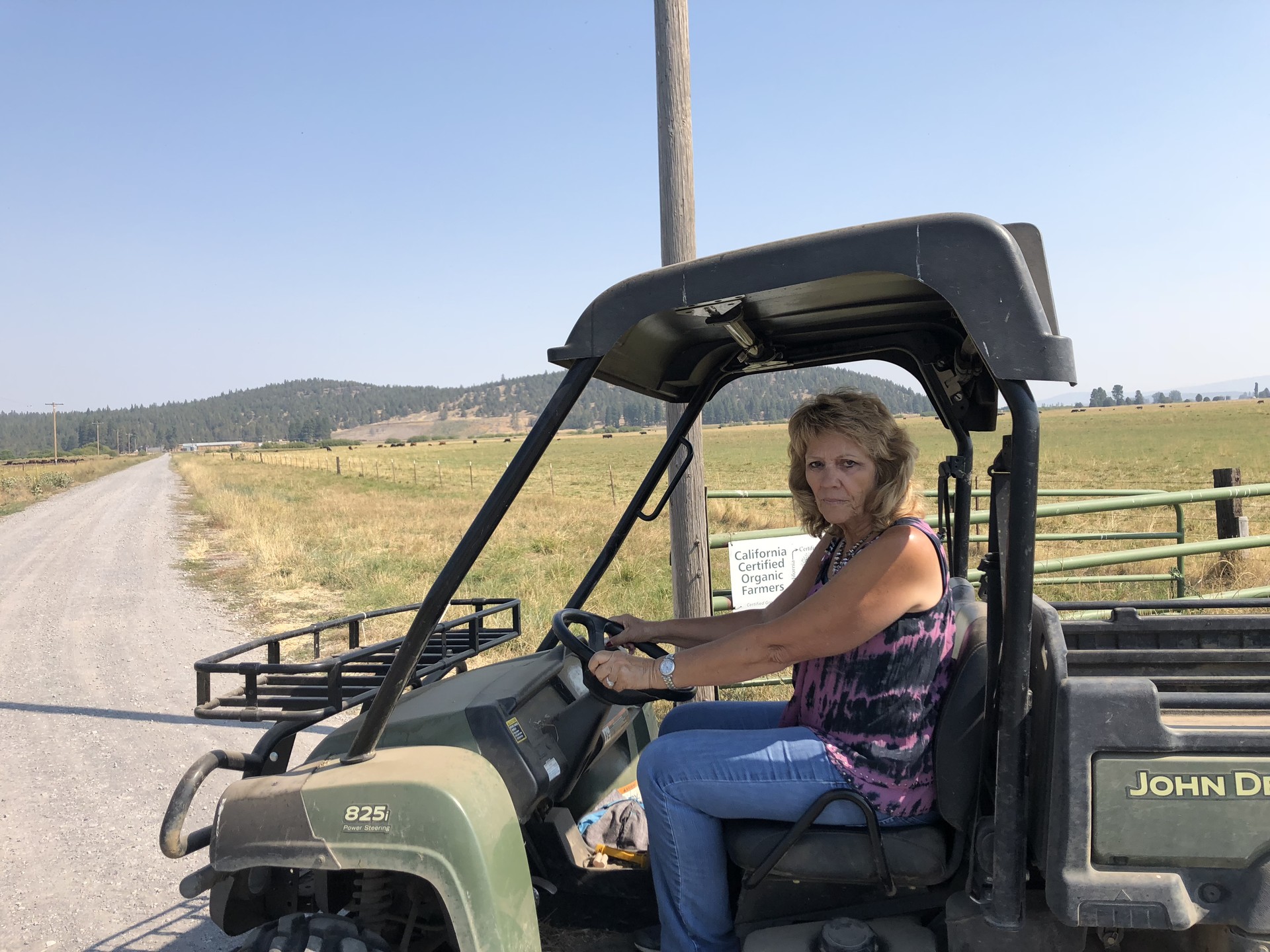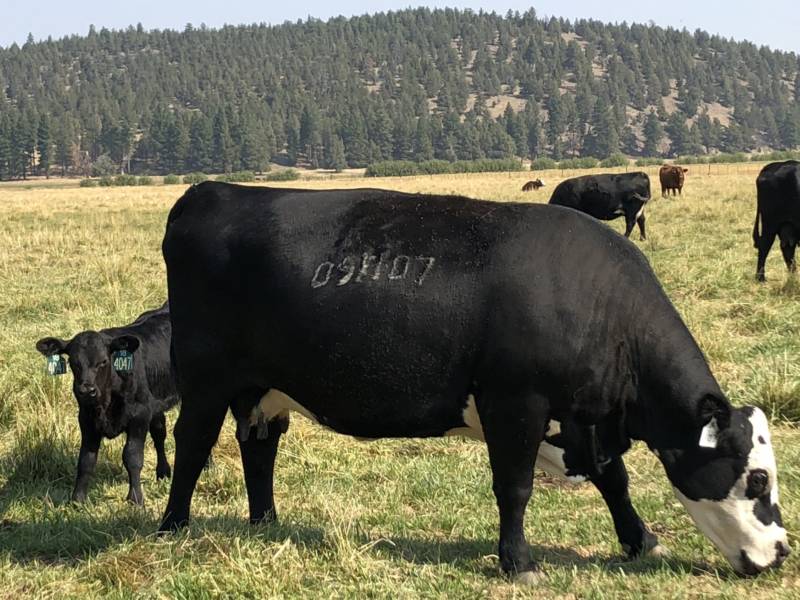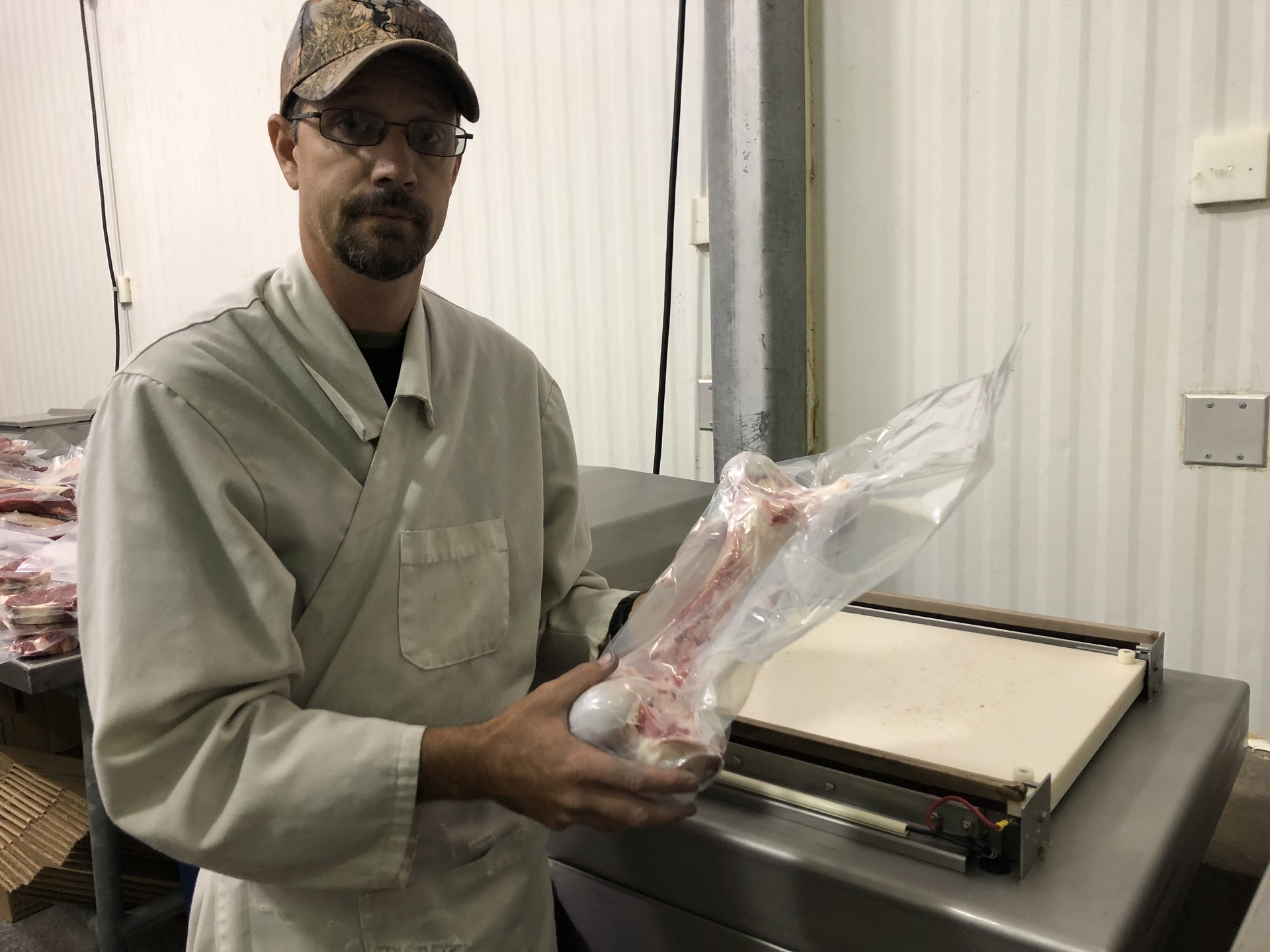I
n a slaughterhouse in Macdoel, a speck of a town in Siskiyou County, just south of the Oregon border, seven workers step around each other and four cow carcasses on the kill floor, their movements almost a dance.
Prather Ranch co-owner Mary Rickert explains the process.
“Just on the other side of that panel, the animal’s knocked unconscious,” she says. “The throats are slit, they have to be bled out. Then they’re laid on this cradle,” where they’re skinned. Workers remove the animal’s organs and spinal cord, then cut the carcass in half with a saw.
That’s where Emily Rosecrans, sporting brightly painted nails, takes over. She trims off imperfections from the carcass.
“I look for hair, feces, bruises, pretty much anything I wouldn’t want to eat,” she says.
After an on-site USDA inspector looks the carcass up and down, Rosecrans says, “I wash it and then I spray with vinegar, which is a natural antiseptic, so it stops the growth of any bad bacteria and helps to stop E. coli.”
She then moves the carcass into a cooler.
Mary’s husband, Jim Rickert, works away from the main action.
“I’m boning out the cow head,” he explains. “You kind of have to know how an animal is put together so you can take it apart.”
He puts all the meat he says he wouldn’t feed to his grandchildren on one tray — that’ll be sold as pet food — and the really good stuff goes on another tray.

“There’s a nice beef cheek right there,” he says. “It goes down to a restaurant in San Francisco, and as I recall they sell a dinner there, a beef cheek dinner, and for $75. I’ve never been able to afford one, but that’s what I hear.”
The people in this room work carefully. There are the USDA standards and Jim’s “grandchildren test.”
Beef Is Much More Than ‘What’s for Dinner’
Aside from food sales, Prather Ranch will also sell parts of these animals to companies in the biomedical field. The hides, for example, go to make a purified collagen solution used in cell research. And bones? Some have been made into screws for things like knee surgery.
“Cow bones are real popular,” says Jim Rickert. “There’s one company that takes all this stuff for dental work,” grinding bones up for fillings.
Another company is researching ways to replace parts of human bones. They’re using Prather Ranch cow bones, which have been 3D-printed with human cells.
“Pretty strange science, but really fascinating,” says Jim Rickert. “And we like doing our part of it. If we’re gonna take the animal’s life, I believe we have the moral obligation to utilize the animal as much as possible. First it’s good business; but it’s good morals.”

Companies come to Prather Ranch for a variety of bovine parts, Mary Rickert says. “We’ve done all the way from pituitary glands to eyeballs to uteri to pericardium.”
In some ways, this is nothing new. Indigenous people around the world have used plants and whole animals for medicine as well as food.
Jim Rickert says that in Western medicine, “There’s clear evidence of people using bones from pigs clear back to the 1700s,” though not very successfully.
“You’ve heard of catgut?” he asks, “Well I think that was one of the things that was used at times for suturing.”
A ‘Closed Herd’ and a Beauty Trend
The Rickerts met and fell in love at Cal Poly-San Luis Obispo, and within a decade, they came up to Prather Ranch to manage the operation. They faced a money-losing business, and had to get creative, Jim explains.
“I shrunk the herd down to about 250 mother cows. We just didn’t buy replacement females,” he says.
That created what’s now known as a “closed herd.” All animals in the herd are born within it; no new ones are introduced. That decision changed everything. Because, at the same time, in the early 1990s, two things were happening that, on the surface, seem to have nothing to do with each other.
The first was an animal health scare.
Mad cow disease — more formally known as bovine spongiform encephalopathy — “was really developing into a real serious health crisis in the United Kingdom and Europe,” Mary says.
The second? A beauty trend: dermal fillers.


